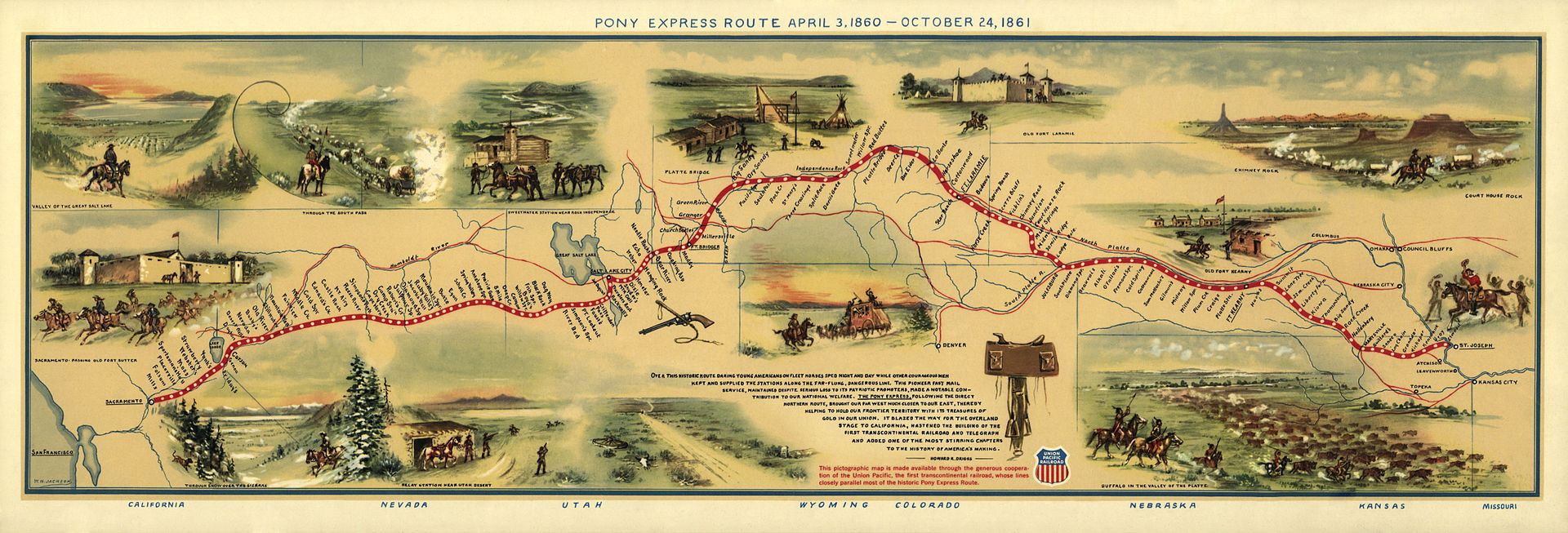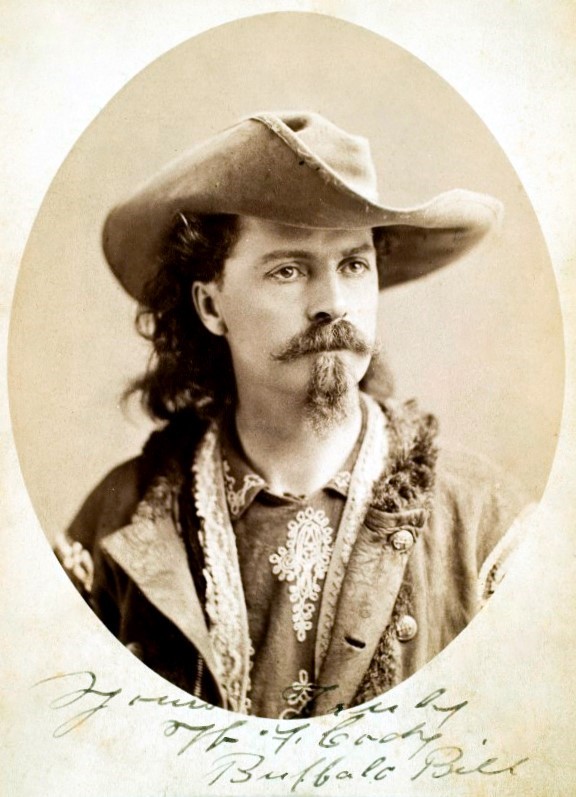The following is from ponyexpress.org/history/:
The Pony Express was founded by William H. Russell, William B. Waddell, and Alexander Majors. Plans for the Pony Express were spurred by the threat of the Civil War and the need for faster communication with the West. The Pony Express consisted of relays of men riding horses carrying saddlebags of mail across a 2000-mile trail. The service opened officially on April 3, 1860, when riders left simultaneously from St. Joseph, Missouri, and Sacramento, California. The first westbound trip was made in 9 days and 23 hours and the eastbound journey in 11 days and 12 hours. The pony riders covered 250 miles in a 24-hour day.
Eventually, the Pony Express had more than 100 stations, 80 riders, and between 400 and 500 horses. The express route was extremely hazardous, but only one mail delivery was ever lost. The service lasted only 19 months until October 24, 1861, when the completion of the Pacific Telegraph line ended the need for its existence. Although California relied upon news from the Pony Express during the early days of the Civil War, the horse line was never a financial success, leading its founders to bankruptcy. However, the romantic drama surrounding the Pony Express has made it a part of the legend of the American West.
During the 1950s, a portion of the neglected Pikes Peak Stables in St. Joseph was saved from total extinction and became the Pony Express Museum. M. Karl Goetz and the Goetz Pony Express Foundation, along with aid and support from the Chamber of Commerce, the citizens of St. Joseph, and the St. Joseph Museum, Inc. helped to save this historic structure. After stabilization and renovation of the remaining portion, new exhibits were installed and the stables opened to the public.
In 1993, the museum underwent a further renovation to restore the remaining portion of the stables to its original size. Modern, interactive and educational exhibits were created to depict the need, creation, operation and termination of the famous mail service that lasted from April 1860 to October 1861. Today the museum continues to stand as a tribute to the legend and legacy of the Pony Express and its enduring era.
Editor’s note: Many thanks to Meryl Wieder, MSO emerita of the Department of Geography, for suggesting this material.


.jpg)

